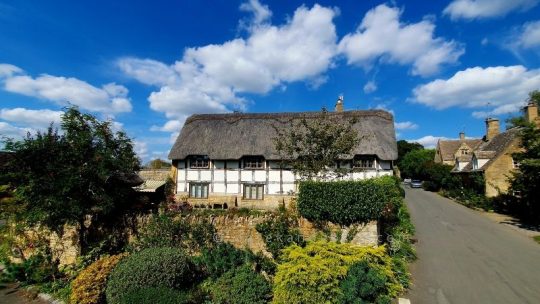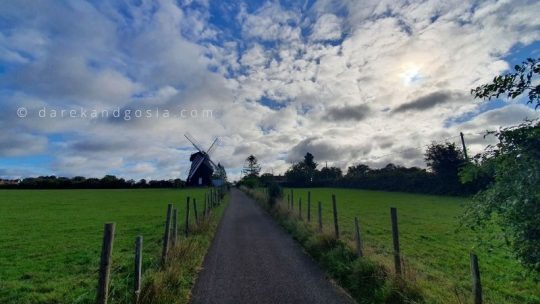Going for a trip to Castle Combe village? Castle Combe Wiltshire England is one of the prettiest Cotswolds villages & a great destination for a romantic break!
A gem in the Cotswolds, Castle Combe is a popular village for tourists to visit. Its honey-coloured cottages and ancient layout make you feel like you are stepping back in time. Whether you visit in the magical frost-sparkling winter, or bright, sunny day; Castle Combe remains a picture-postcard delight with plenty to see and do.
Situated in the Cotswolds Area of Outstanding Natural Beauty in north west Wiltshire, Castle Combe is an archetypal English village that has earned the title of the “prettiest village in England.” This charming village has been a favorite location for filmmakers, featuring in recent films such as The Wolf Man, Stardust, and Stephen Spielberg’s War Horse, as well as the original Dr. Doolittle film.
Castle Combe boasts a rich history and is composed of picturesque houses constructed from the distinctive honey-colored Cotswold stone, typical of this area. Among the village’s noteworthy landmarks are the Market Cross and St. Andrew’s Church, which dates back to the 13th century and houses a faceless clock that is reputed to be one of the oldest functioning clocks in the country.
Visitors to Castle Combe can also indulge in the village’s selection of pubs and luxury hotels, including a hotel with an accompanying golf course. Take a leisurely stroll through the village and across the bridge to appreciate the breathtaking views and perhaps purchase homemade sweets, cakes, or flower bouquets from the locals’ stalls. Don’t forget to stop at the base of the village by the bridge to capture a memorable photographic moment!
Read on for our complete guide to help you plan your visit – it really is one of the best places to visit in the UK!
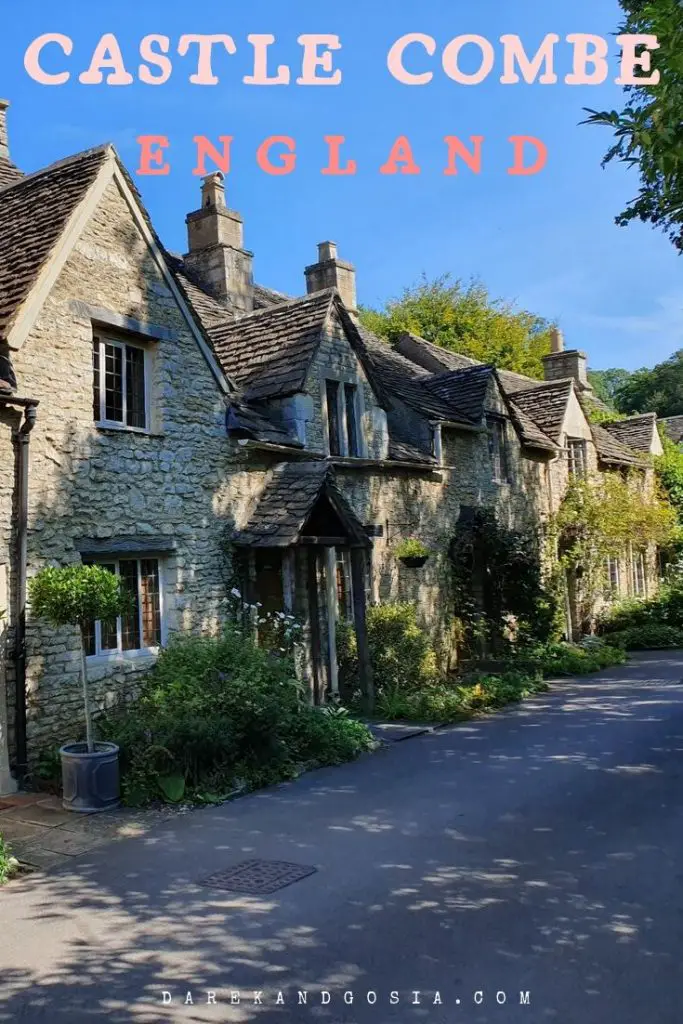
Where in the Cotswolds is Castle Combe?
Castle Combe is located in the southern part of the Cotswolds, in the county of Wiltshire in South West England. It is situated approximately 12 miles northwest of the town of Chippenham and 5 miles northeast of the town of Bath.
Where to Stay in Castle Combe?
There are quite a few options when it comes to accommodation in and around Castle Combe. There are several bed and breakfasts dotted around the edges of the village. If you are interested in renting a self-catered cottage, there are a few available within the heart of the village.
One of the best places to stay in Castle Combe is The Old Museum cottage. This stunning holiday home comes with free WiFi and free private parking. Staying at the Old Museum will definitely make your weekend a special one!
If you are looking for a hotel, you have two choices. The Castle Inn is located above one of the bustling pubs in the village. The other option is the Manor House Hotel, which is a luxury 5-star hotel located in The Old Manor House.
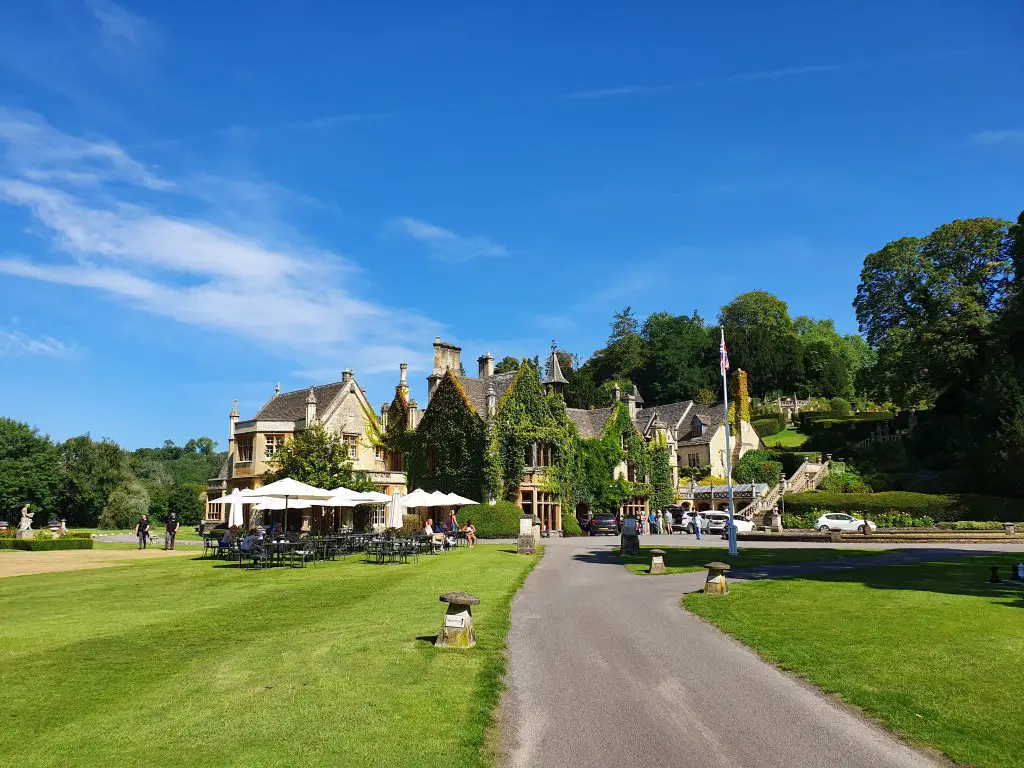
Castle Combe facts:
| Population: | 344 |
| County: | Wiltshire |
| Region: | South West |
| Film location: | Doctor Dolittle |
| Famous for: | Cotswold cottages |
| Best to visit: | Summer |
Castle Combe village info:
When was Castle Combe built?
In the fifth century, on the hill above where Castle Combe lies, was a Roman Villa. Hundred of years later, between 1135 and 1154, the Normans constructed a castle on the hill just above where the village now is.
The old castle was little more than a hill fort, and by the 14th century, the castle was already in a state of disrepair.
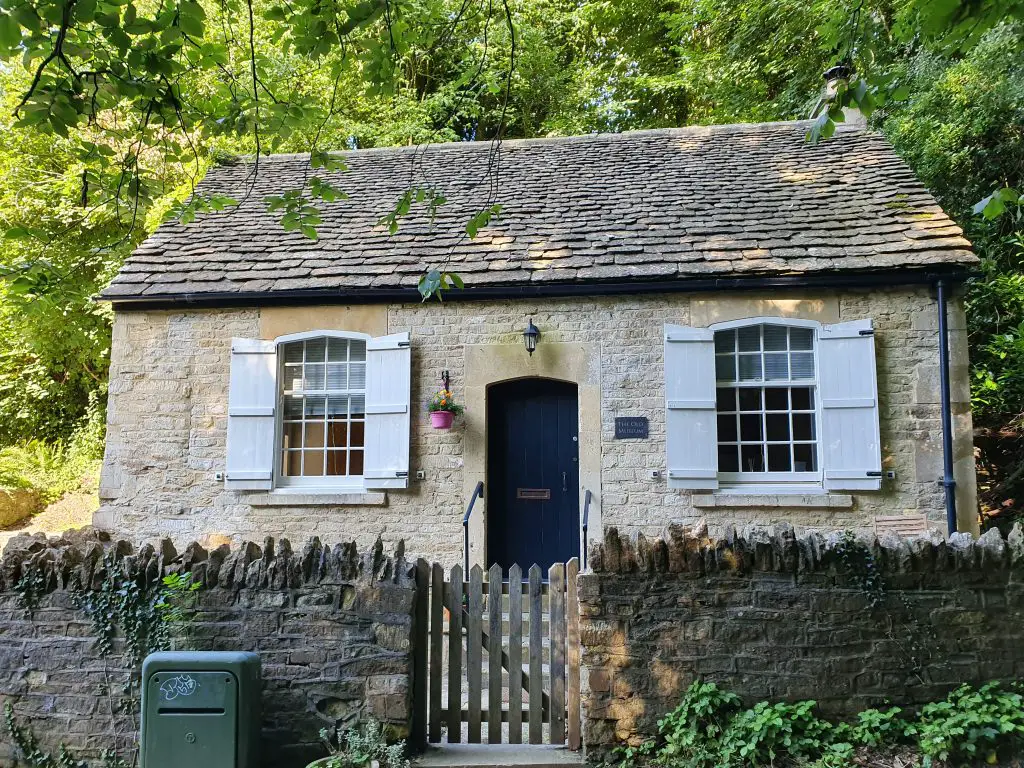
However, during the middle ages, Castle Combe became a thriving village. The place became an important village in the wool trade. As such, it was home to many weavers as well as vast flocks of sheep.
Over the next few hundred years, the village as it stands began to take shape. In fact, there have been no new houses built in the village of Castle Combe since the 1600s!
Why is it called Castle Combe?
Castle Combe is named after the medieval Castle Combe Castle, which was built in the 12th century by the Lord of the Manor, who was likely the one who gave the village its name.
The word “Combe” is derived from the Old English word “cumb”, meaning “valley” or “hollow”, so Castle Combe can be translated to “the castle in the valley” referring to the location of the castle. The castle was abandoned and fell into ruin by the 14th century, but the village retained its name and the castle remains can still be seen today.
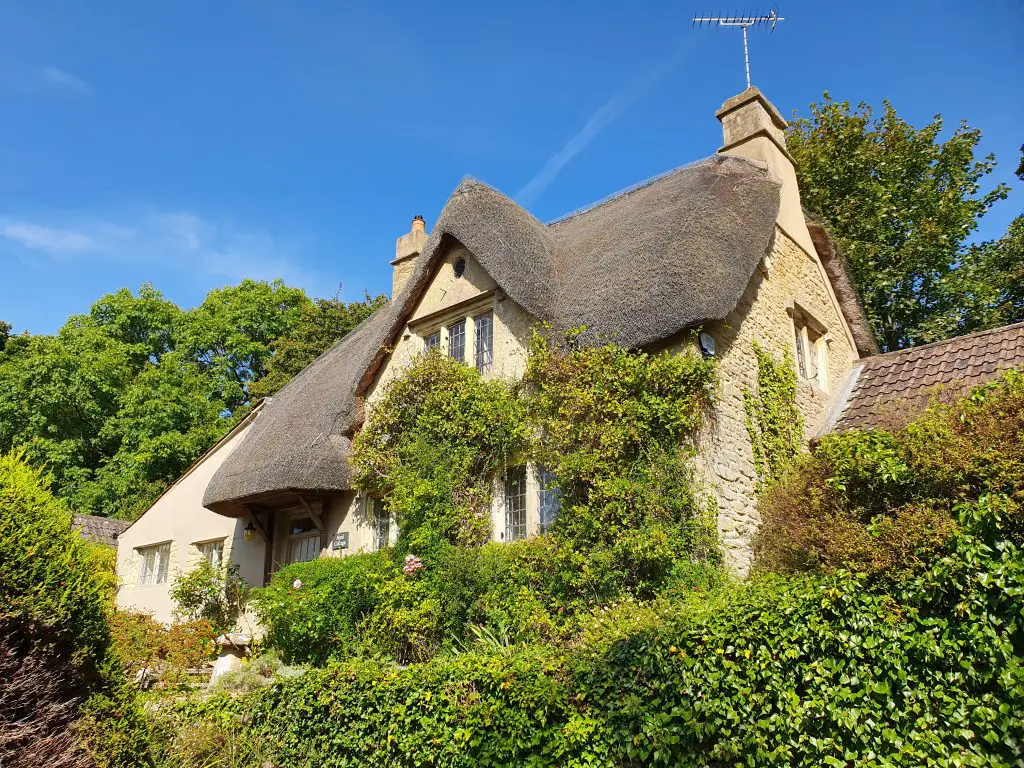
Is Castle Combe a village or town?
Castle Combe is located in the rural surrounds of the Cotswolds. The combination of location and size marks Castle Combe as a village. Its picturesque appearance means that you may well have already seen Castle Combe as it is often used as the scenic backdrop for period dramas filmed in the UK. In fact, Castle Combe is one of the most unique villages to visit in Europe.
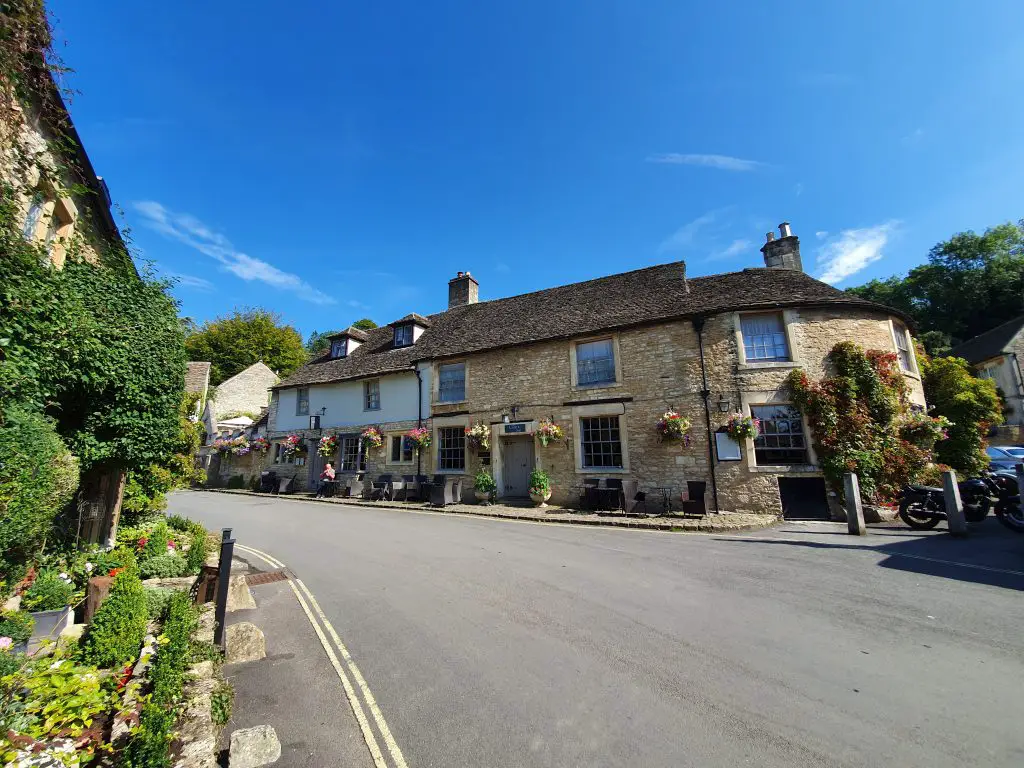
Is Castle Combe the oldest village in England?
It is hard to say with any certainty which is the oldest village in England. As villages are small and ever-evolving, it can be hard to date their foundation. The Castle Combe history is very interesting and there are many old and historic buildings you can see.
The village itself is certainly rich with history. Castle Combe is also home to one of the oldest working clocks in the country. You can find this clock in St Andrew’s church.
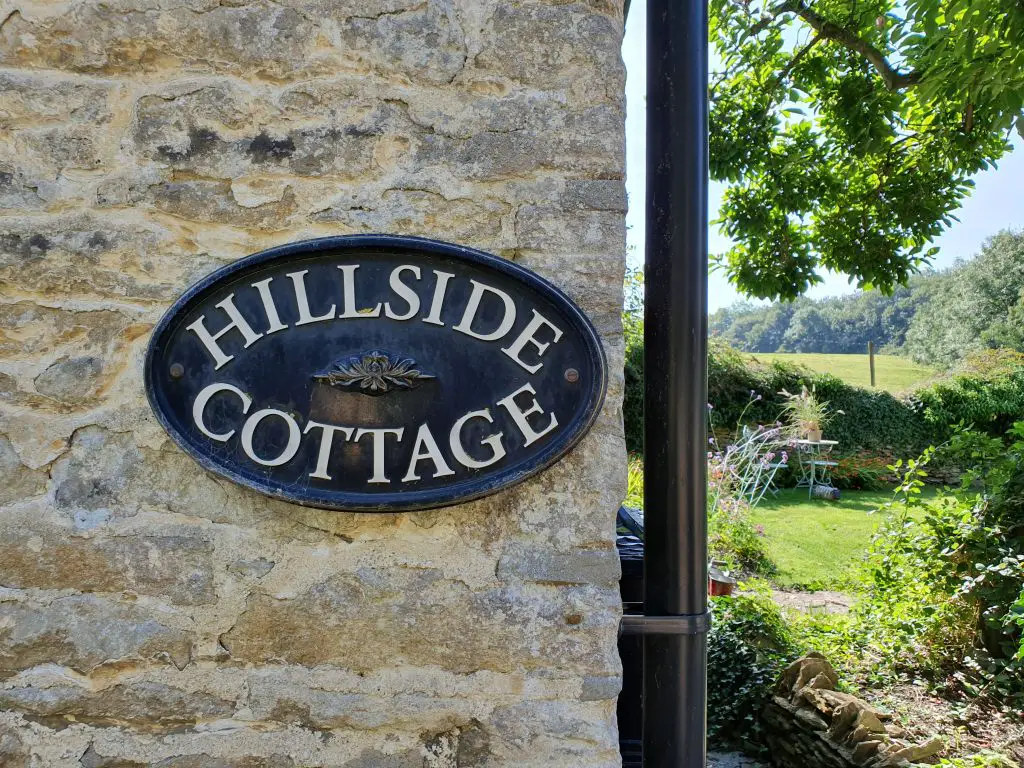
Was Castle Combe named the prettiest village in England?
Many people consider Castle Combe to be one of the prettiest villages in the south of England, and it has indeed been called such. The village regularly tops official and unofficial charts for the prettiest village in England.
Notably winning the vote for the prettiest village in England in 1961. The Culture Trip also names the village as one of the top ten most beautiful villages in the UK.
So, is Castle Combe prettiest village in England? In our opinion, it really is in the top 3!
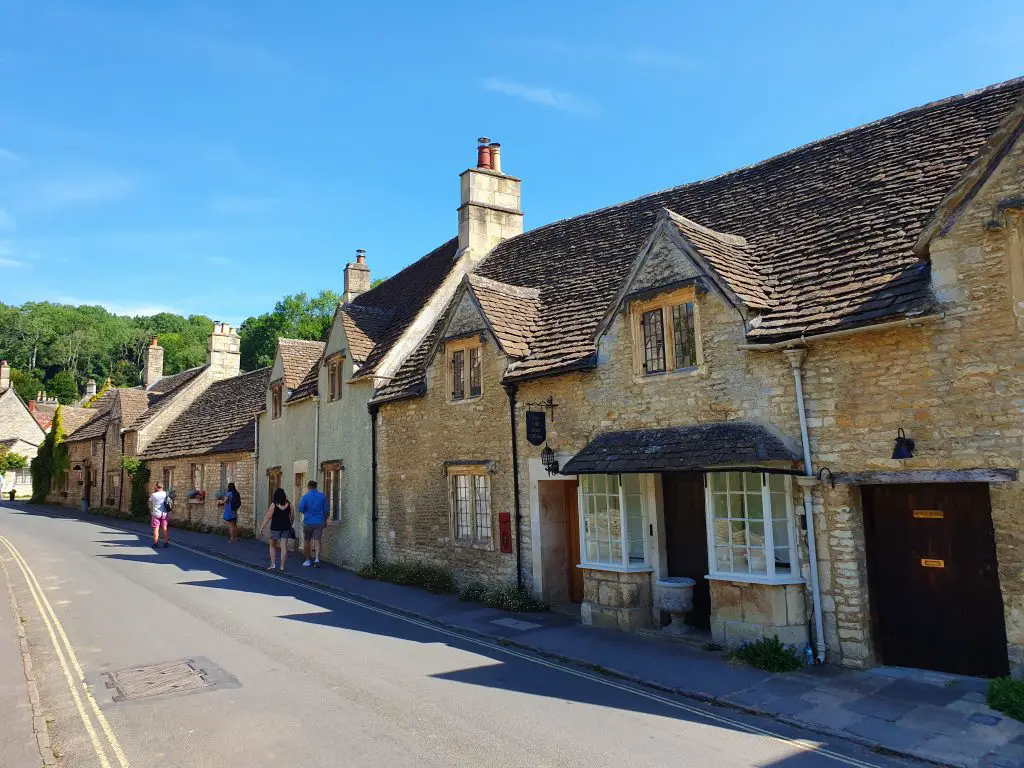
Castle Combe village postcode and location
Castle Combe is around five miles northwest of Chippenham. The postcodes for the centre of the village are all SN14. The postcodes range from SN14 7HL – SN14 7HY.
Be aware that the village has many parking restrictions in place to preserve its character and make it safe for visitors. However, there is a car park, just outside of Castle Combe where you can leave your vehicle and explore the village on foot.
Castle Combe postcode: SN14 7HH (Castle Combe free visitor car park).
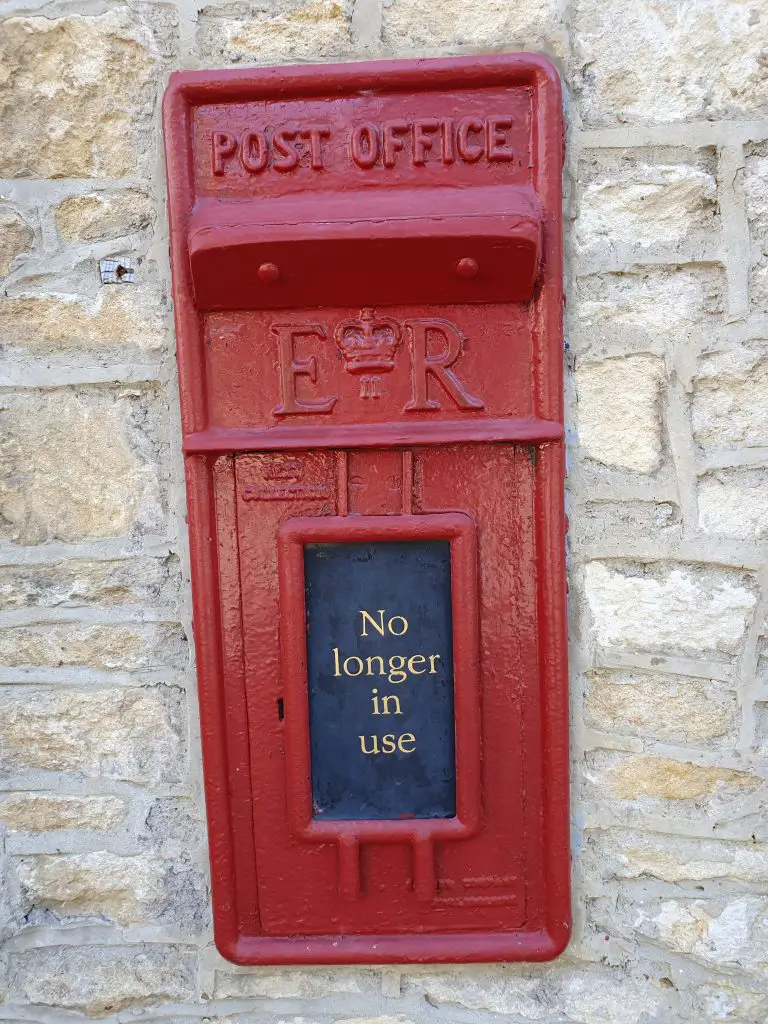
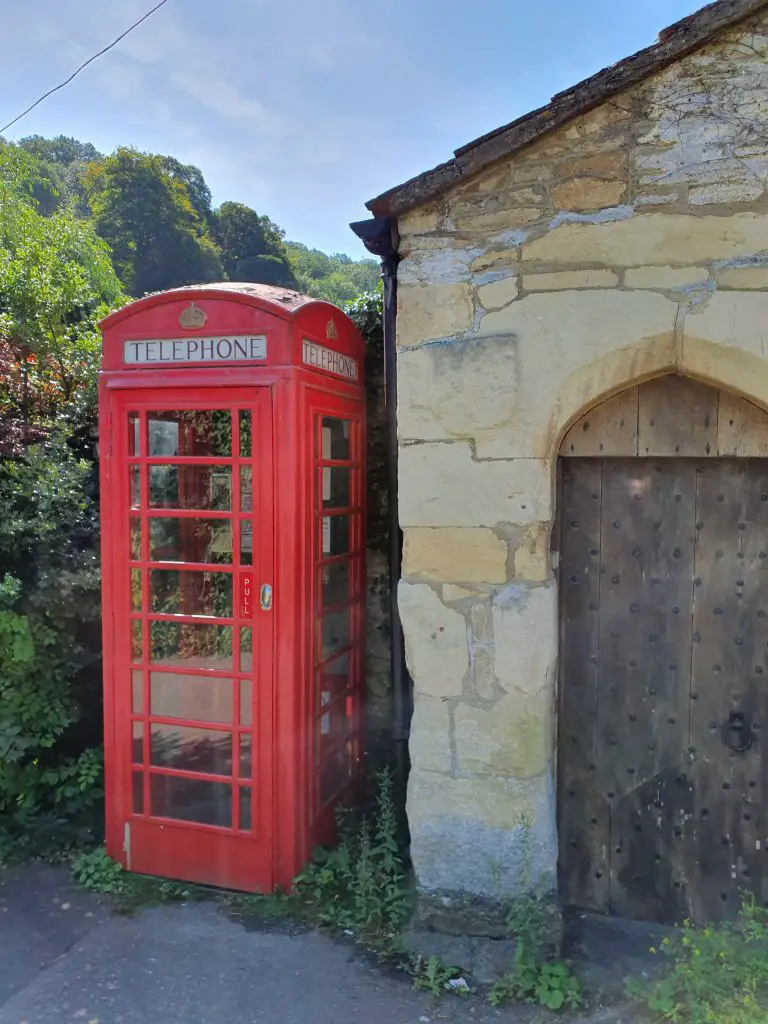
What county is Castle Combe in?
Where is Castle Combe England? The village of Castle Combe is located in the North West area of the county of Wiltshire.
Is Castle Combe in the Cotswolds?
Yes! In fact. it is one of the most beautiful villages in the Cotswolds region! 🙂
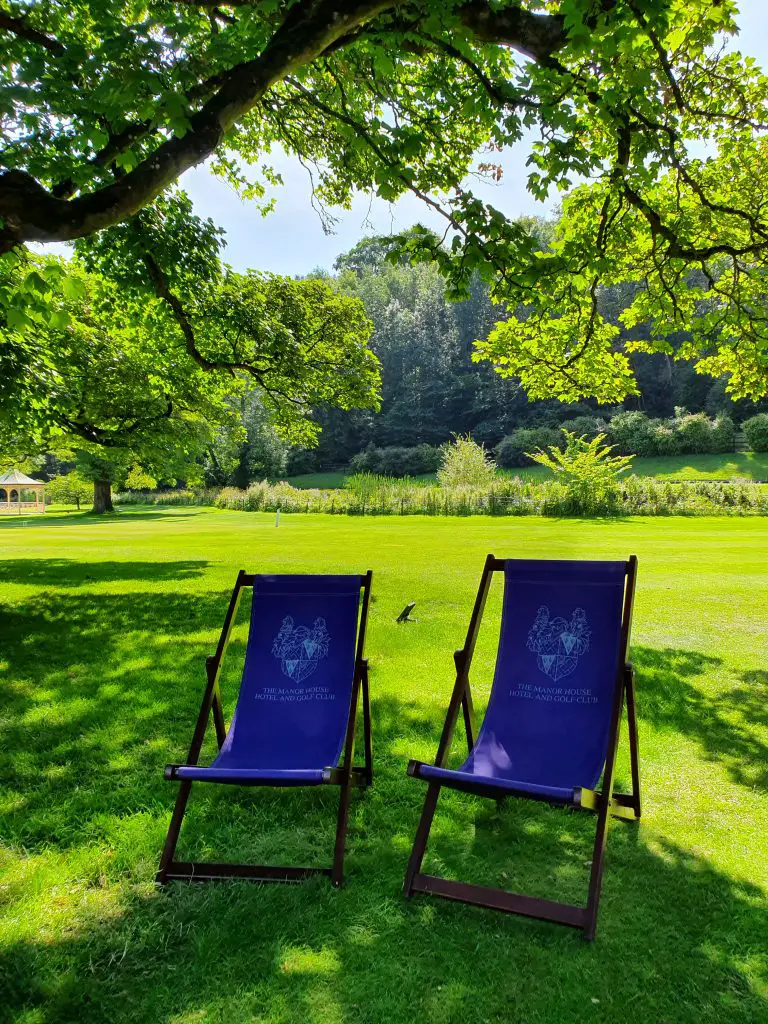
How to get to Castle Combe?
If you are planning to visit Castle Combe Wiltshire then there are a few ways to do that.
Castle Combe from Chippenham
You can take the number 35 bus from Town Bridge in Chippenham directly to the village centre. The bus ride takes about 23 minutes.
By car, it takes about 11 minutes to travel along the A420 onto the B4039 which will take you right to the heart of Castle Combe.
Read also our guide to renting a car in Europe
Bath to Castle Combe
To use public transport to get to Castle Combe from Bath you should first take either a bus or a train to Chippenham and then take the number 35 bus from Town Bridge.
There are a few different routes from Bath to Castle Combe. The easiest way is to take the A4 towards Chippenham, then take the A350 to the A420, then follow the signs to Castle Combe.
Castle Combe from London
To use public transport to get to Castle Combe from London you should first take either a bus or a train to Chippenham and then take the number 35 bus from Town Bridge.
If you are travelling by car from London, you want to head out on the M4 towards Chippenham and then take the A350 and follow signs for the B4039 and Castle Combe.
How far is Castle Combe from London? The journey from London to Castle Combe is around 100 miles, which will take you around 2 hours by car.
Whichever transport you take, Castle Combe village is a perfect place to visit on a day trip out of London!
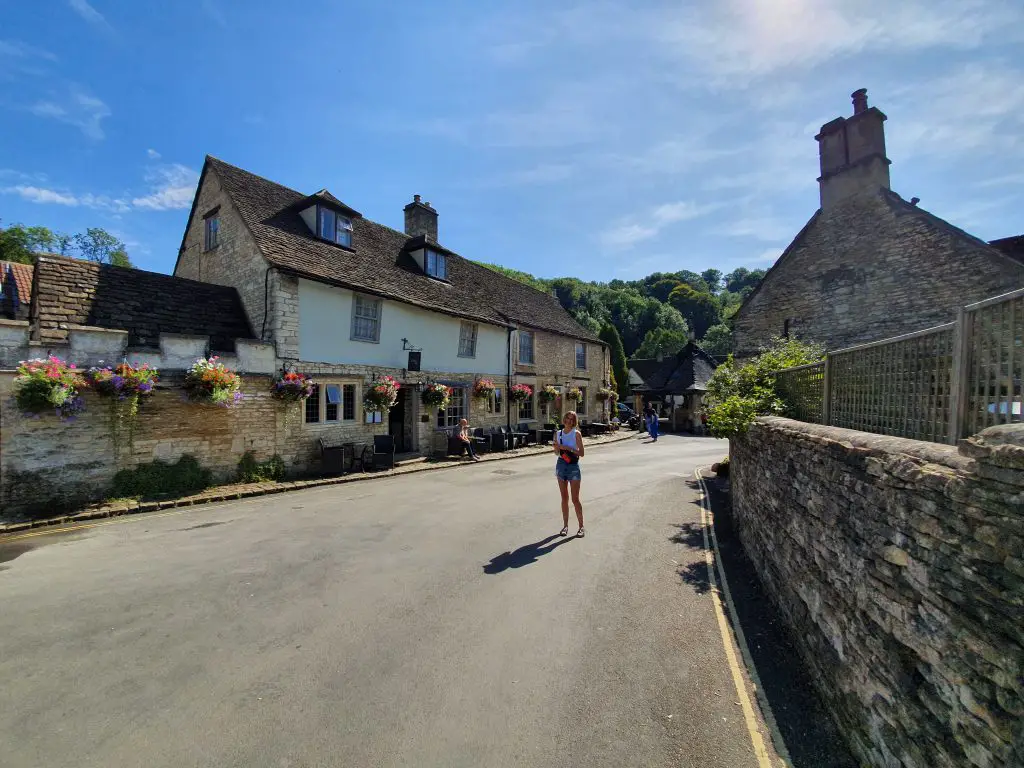
Parking in Castle Combe
There is only one carpark in the village. It is located just outside of the village at the top of a hill. There is a path that joins the car park to the village. It is a little steep, but it is a picturesque walk through the trees.
The Castle Combe parking is free to use and is open 24 hours a day.
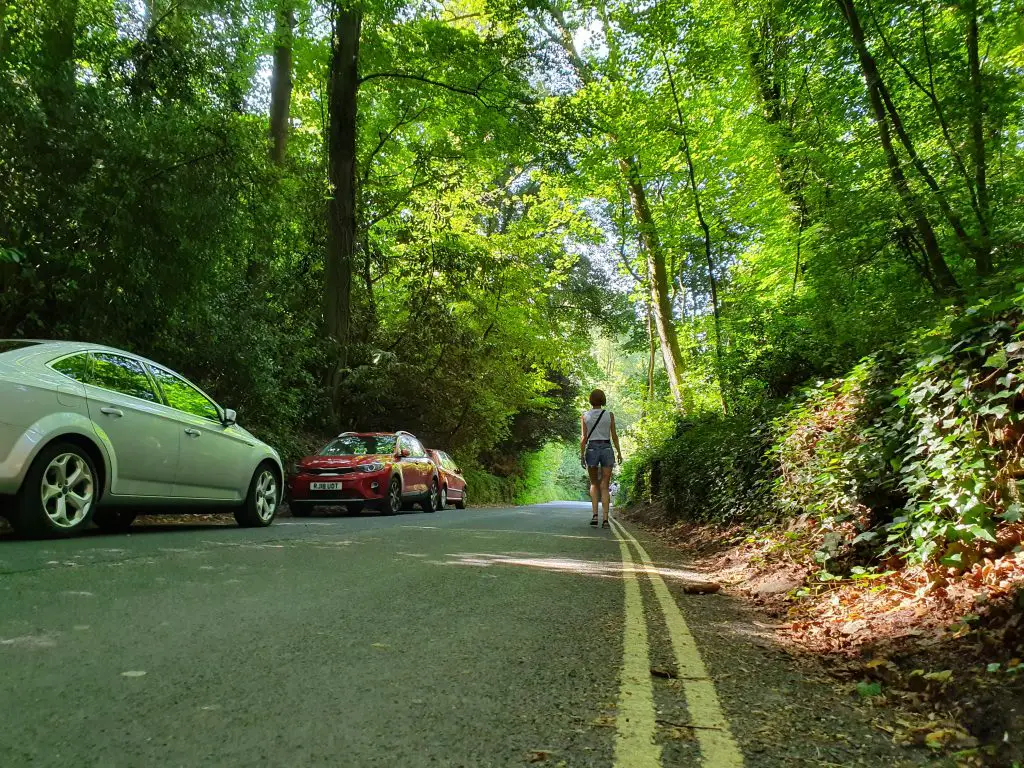
Things to see in Castle Combe
What to do in Castle Combe? From Castle Combe walks to amazing pubs there are many interesting things to do in Castle Combe.
1. The Village Pound
As you stroll down the road from the car park towards the village, you might notice a small stone-walled enclosure, on the right-hand side of the road. Inside the enclosure, there is a seat that was built in 1977 to commemorate Queen Elizabeth’s Silver Jubilee. This small stone enclosure used to be used to secure stray animals until their owners could be found and fined.
2. The Dower House / Upper Manor
Once you reach the village, the first main building you will pass is a large yellow house. This is the Dower House. You can easily recognise it as above the door there is a family crest. The crest belongs to the Scope family.
Traditionally this house was home to the village doctor. It has also featured as the home of Dr Dolittle, in the 1967 version of the film. It really is a top place to see in Castle Combe village England.
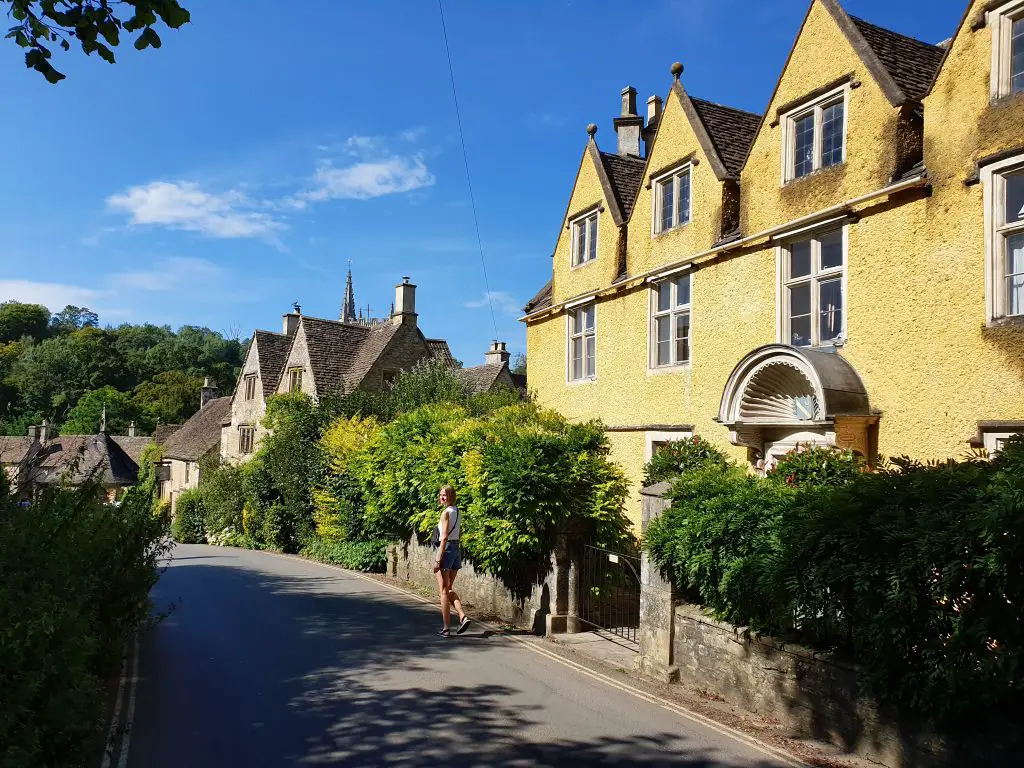
3. The St George
The next house along the road has a small castle mounted on the wall between the second-floor windows. This castle is why this building is now known as Castle House. Those with sharp eyes may be able to make out the initials NE along with the year 1672.
This marks the year that Nathanial Elver built the house, which at the time was used as an alehouse, called St George.
4. The Market Cross
Anyone visiting Castle Coombe village will see this landmark. At the crossroads in the centre of the village, you can find the heart of the village. The unmistakable market cross was built in the 14th Century and still stands proudly today. The market cross was built to show that the village had permission to hold weekly markets
A small distance from the roofed market cross, you see a smaller stone structure. Known Buttercross, this is what remains of the tethering post and mounting block of the town.
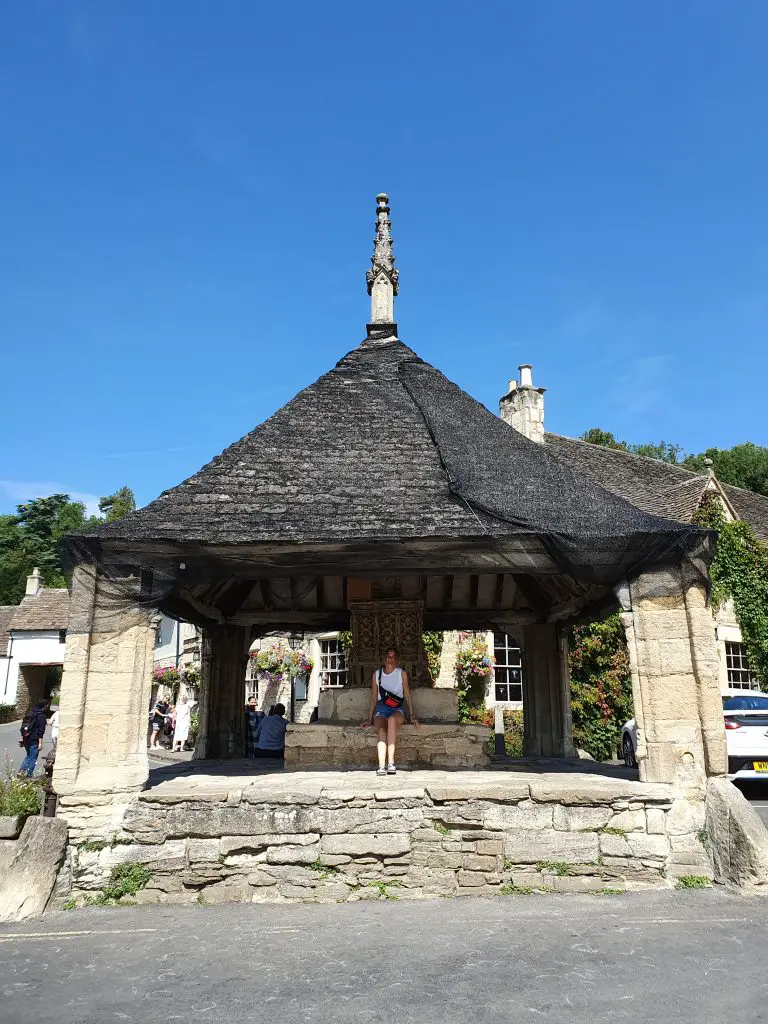
5. Archway Cottage / The Garrett House
Taking a right up west street takes you past The Castle Inn and to an unusual sight. Over the road, there is a small cottage. The buildings form an archway over the road, which is why it is often called Archway Cottage. The true name of the building is the Garrett House.
This reallt is a nice spot in CastleCombe village.
If you want to stay in this unusual building, it is now part of the accommodations of The Manor House Hotel.
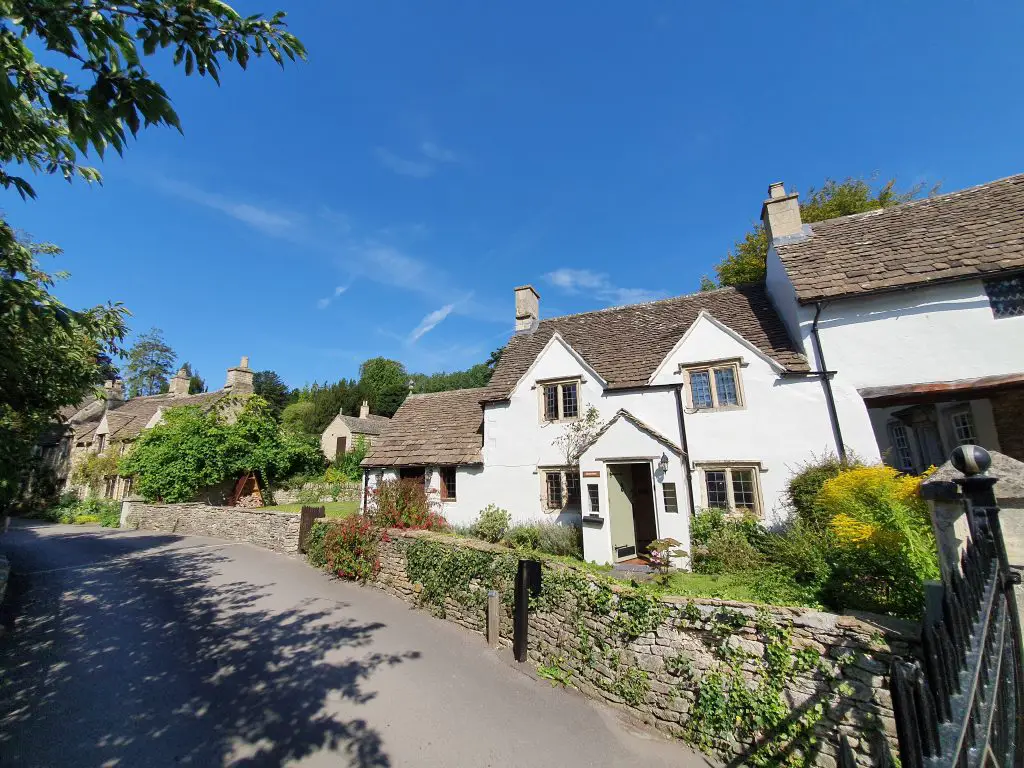
6. St. Andrew’s Church
Castle Combe Cotswolds, like most villages in the Cotswolds has a beautiful church.
Right next to the market cross is the entrance to St Andrew’s Church. The church was first built in the 13th Century. It has been extended over the years, so that is now has a modest tower, one of the oldest working clocks in the country and a monument to a Norman Knight.
The church is well worth a look. It is well cared for by the local parishioners who have a tradition of installing beautiful flower arrangements in the church.
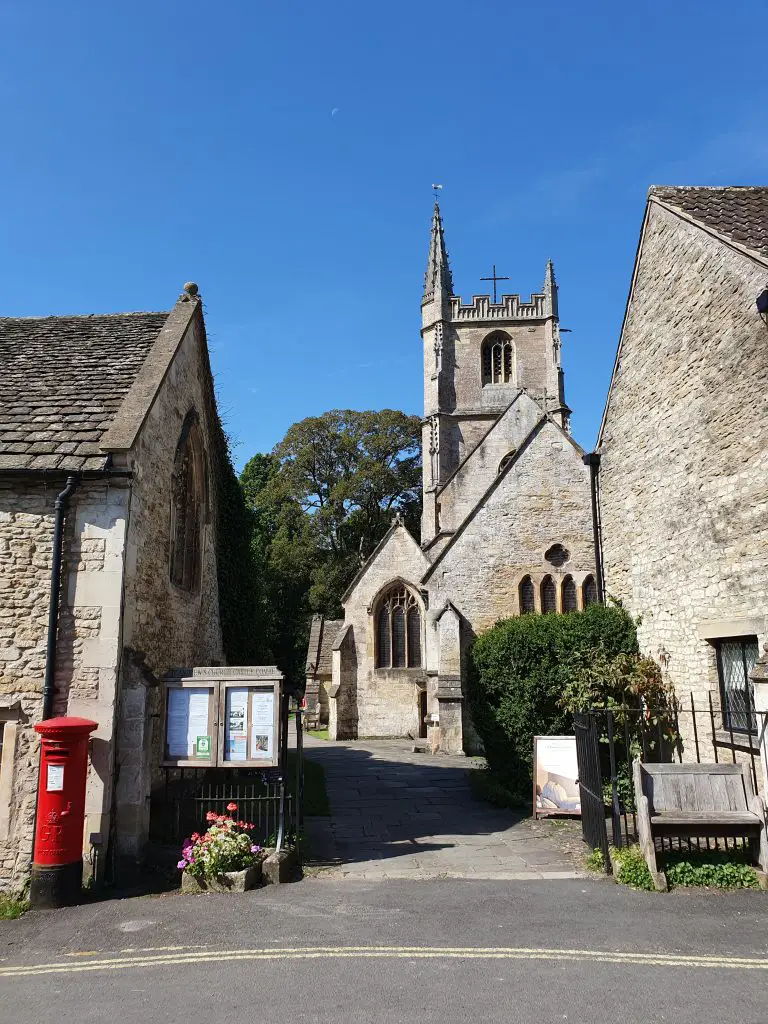
7. The White Hart
Looking for the best Castle Combe pubs?
On the opposite side of the market square is the White Hart. This lovely little pub has been serving refreshments for five centuries. Which is a great excuse for you to have a seat and a drink, you’ll just be keeping the history of the place alive.
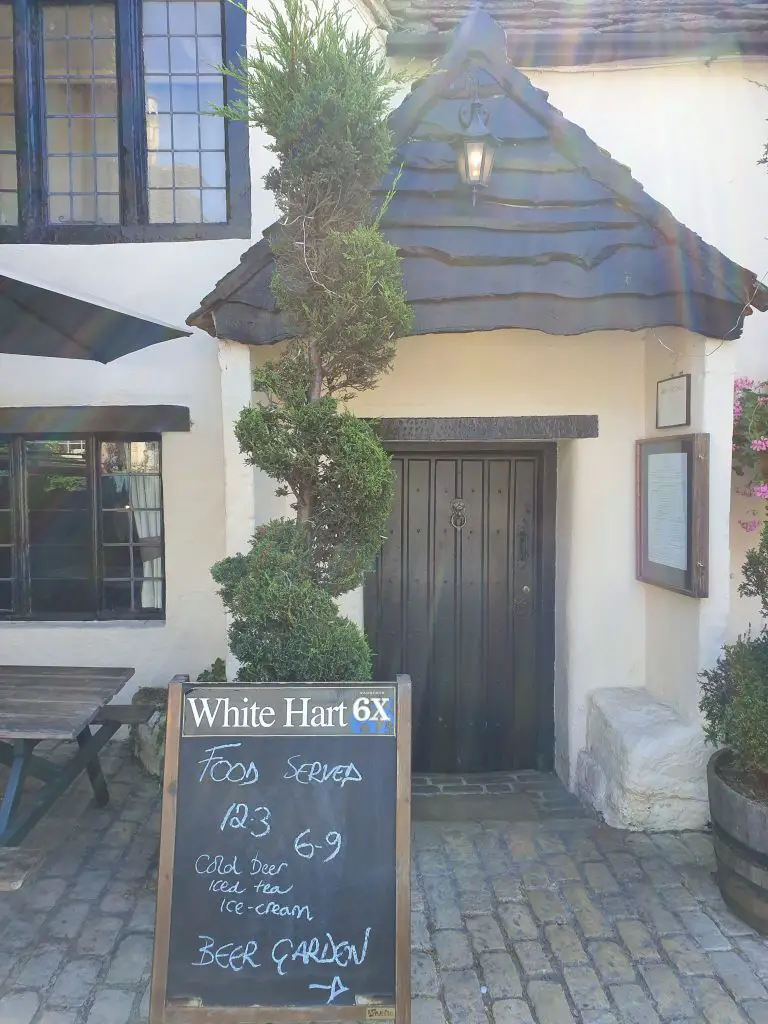
8. The Court House
Just down from the pub is the Court House. The Court House was home to the Court Leet during the Middle Ages. The lord of the manor relied on this court to maintain law and order in the village and surrounding area.
Castle Combe UK is full of amazing buildings and the Court House is one of the most stunning.
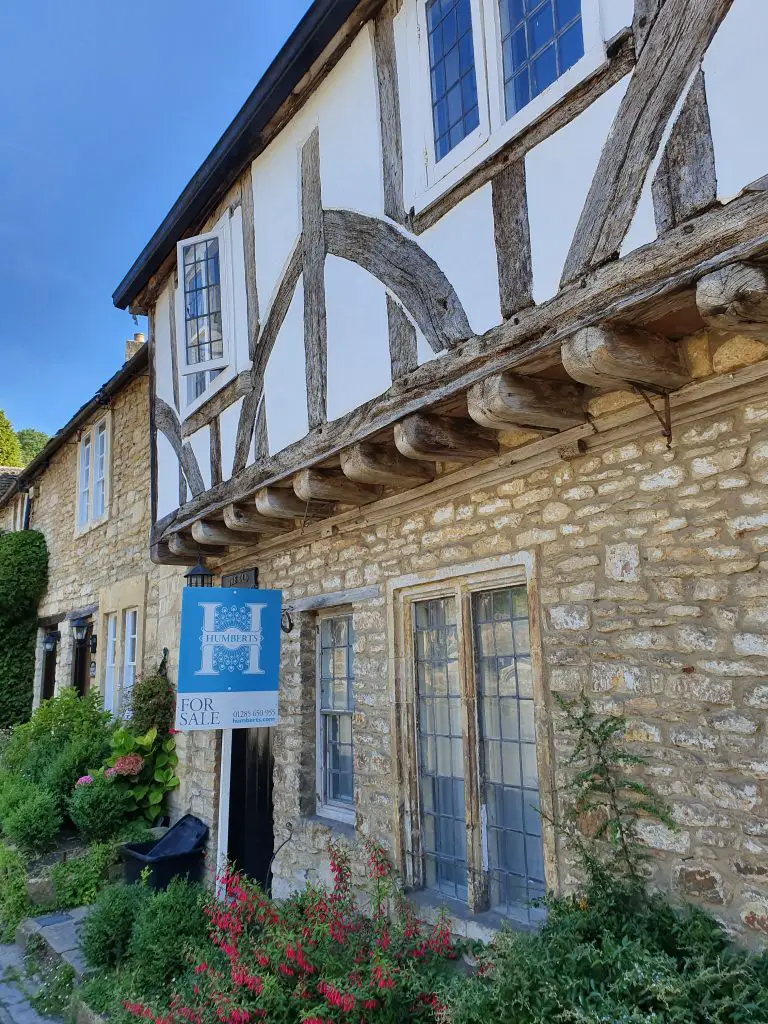
9. The Bridge
Castle Combe bridge really has to be seen!
At the end of the town, there is the old bridge over the river at the end of town. The bridge was originally built out of wood but was rebuilt in the 18th Century. You might be able to see the steel grids hanging over the sides of the bridge. These are in place to help keep the deer herds within the manor park.
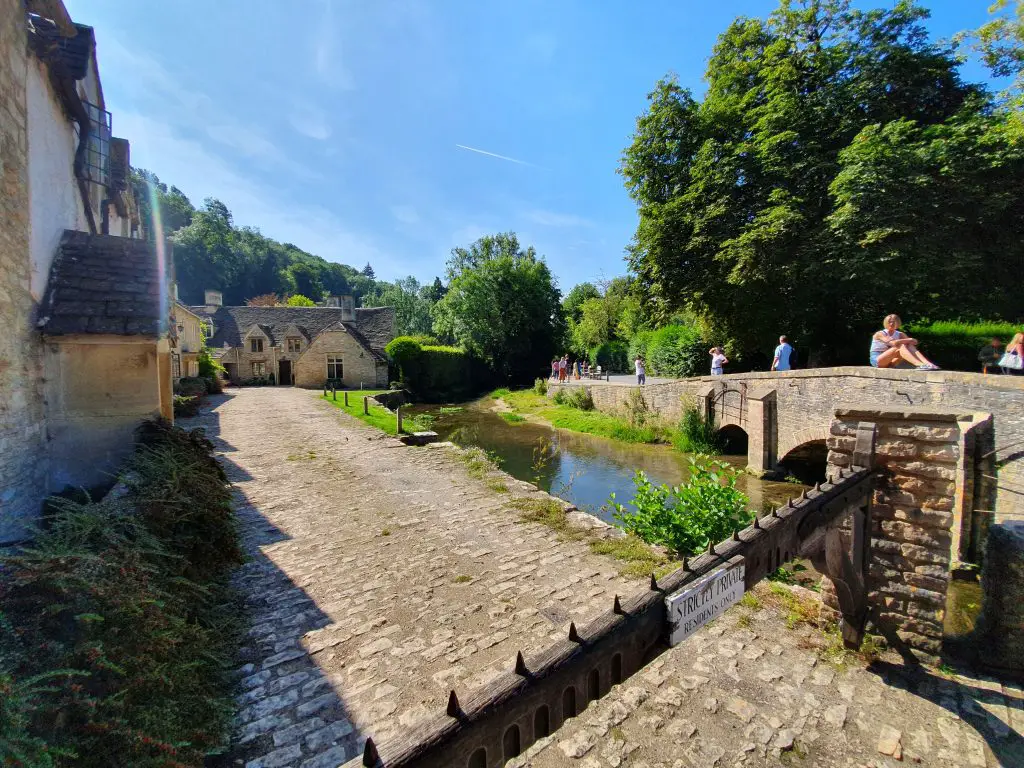
10. The Roman Bridge
At the very end of the village, there is Smart’s Bridge. The bridge is a small and one-sided bridge, and the locals call it the Roman Bridge. It’s called this, not because of when it was built, but because of a local ghost story. The locals say that you can sometimes see the ghost of a Roman Centurian on the bridge.
11. Castle Combe Circuit
From all the Castle Combe things to do this one is the most interesting one for all motorsport lovers!
The circuit is possible one of the biggest draws to the area. It was built shortly after Silverstone, making it one of the longest-running race circuits in the country. The track runs around the perimeter of an old World War II airfield. The track is just shy of 3km in length.
Due to its location and complaints about the noise, there are no major racing events held here. You can, however, see club level car and motorbike races. You can also try out the circuit yourself.
As well as racing the circuit is also host to an annual half marathon. There are regular car boot sales, and in May each year, there is a steam rally.
Castle Combe village history
The history of Castle Combe village can be traced back to the Roman era, with evidence of a Roman villa discovered in the area. During the Middle Ages, the village prospered as a center of the wool industry and developed around a market square, which is still the heart of the village today.
In the 14th century, Castle Combe was granted a royal charter to hold a weekly market and an annual fair. The village also became a center of the Cotswold wool trade, with the wool merchants building grand houses and mansions in the village. Some of these historic buildings can still be seen in the village today, such as the Market Cross, the 14th-century St. Andrew’s Church, and the old wool storehouses.
In the 15th century, the village became part of the estate of the wealthy Scrope family, who built the grand Manor House, which is now a luxury hotel. Castle Combe continued to thrive until the 16th century, when the wool industry began to decline. The village’s fortunes declined along with the wool trade, and it became a sleepy backwater.
In the early 20th century, Castle Combe was rediscovered by artists and writers, who were drawn to the village’s picturesque beauty and rural tranquility. Today, Castle Combe is a popular tourist destination and a favorite location for filmmakers, with its historic architecture and charming rural setting making it a quintessential English village.
Restaurants in Castle Combe village
In the heart of the village, there are four main options when it comes to eating out.
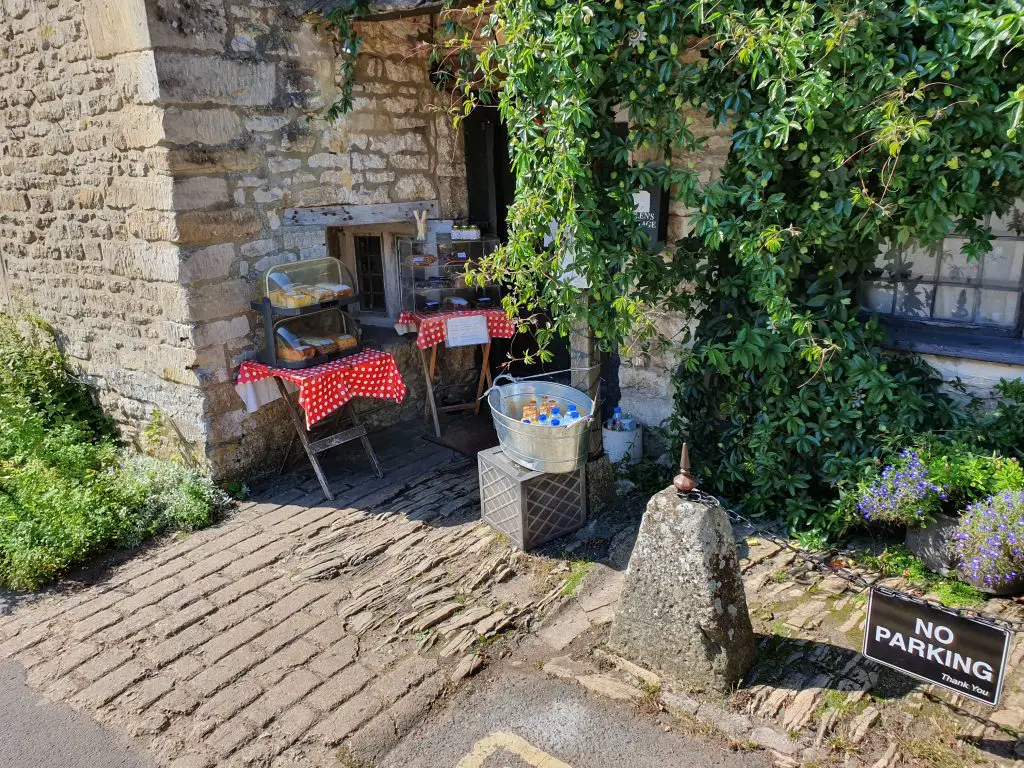
Bybrook Restaurant – The restaurant is located in the Manor House Hotel, and is open to non-guests too. The food is seasonal, locally sourced and sublimely presented. A meal here is a real treat to be enjoyed. The staff are attentive and knowledgeable and go out of their way to ensure you have a great experience. This is definitely the place to go if you want to treat yourself.
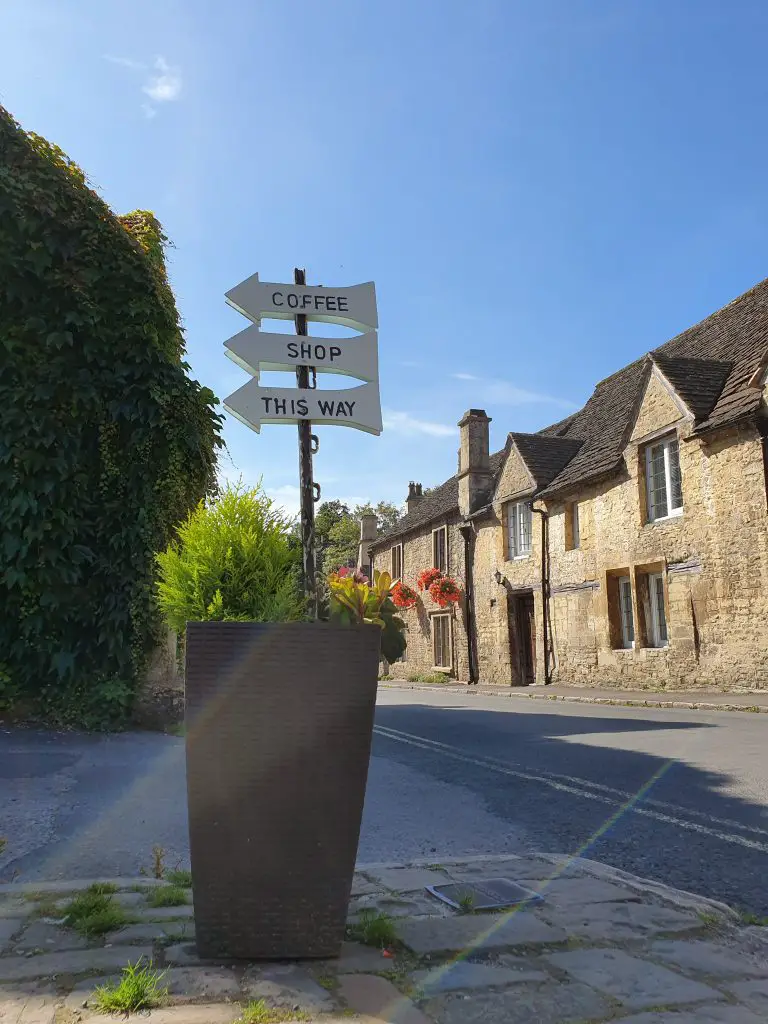
The White Hart – This is a good place to try if you are after a traditional English pub meal. The portions are generous, and the food is hearty. Dogs are also welcome here, so it’s a great option if you’ve been walking your pup in the area. They have bowls for dogs in the outside seating area.
The Old Stables Coffee Shop – Located in the Estate yard the converted stables are now home to a delightful little coffee shop. You can grab a cup of tea or coffee and a light bite here. There are plenty of vegetarian options as well as an abundance of tasty cakes and scones to choose from.
The Old Rectory Tearoom – If you are after a quintessential English high tea, then this is the spot for you. You are guaranteed a warm welcome and a truly scrumptious meal. If you have a large group, you can book to have tea in the village hall where they can cater for up to 50 guests.
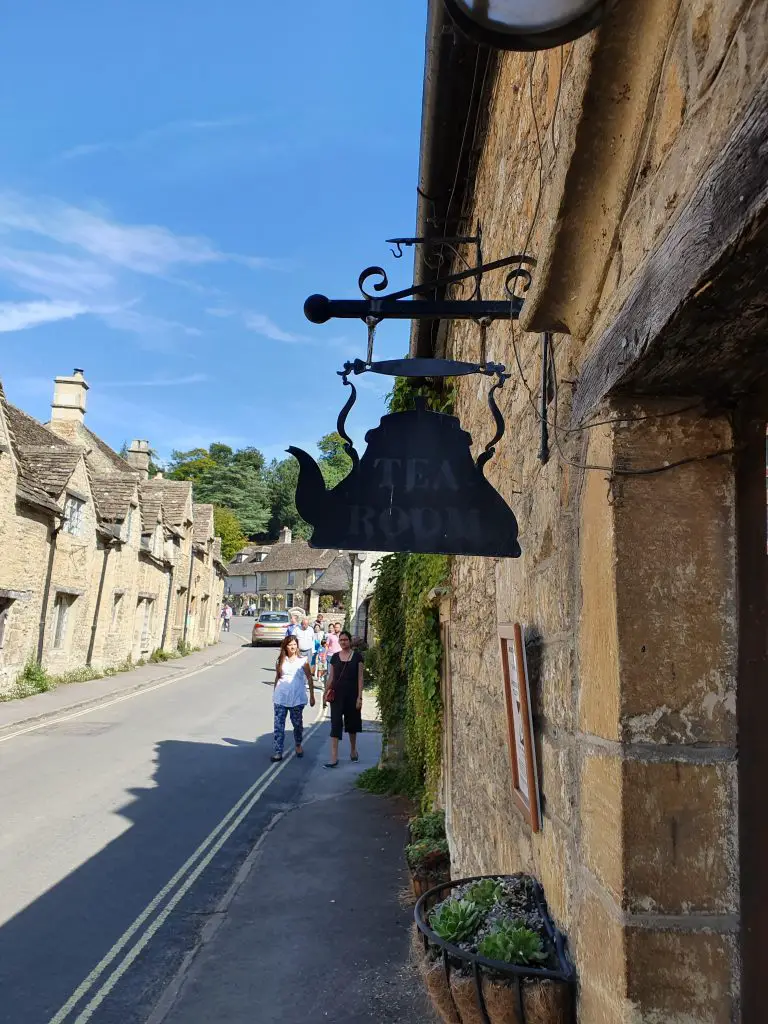
Are there any Castle Combe tours?
There are currently no tours of Castle Combe specifically. However, several tour companies offer tours of Wiltshire and the Cotswolds. Many of these tours make stops in Castle Combe.
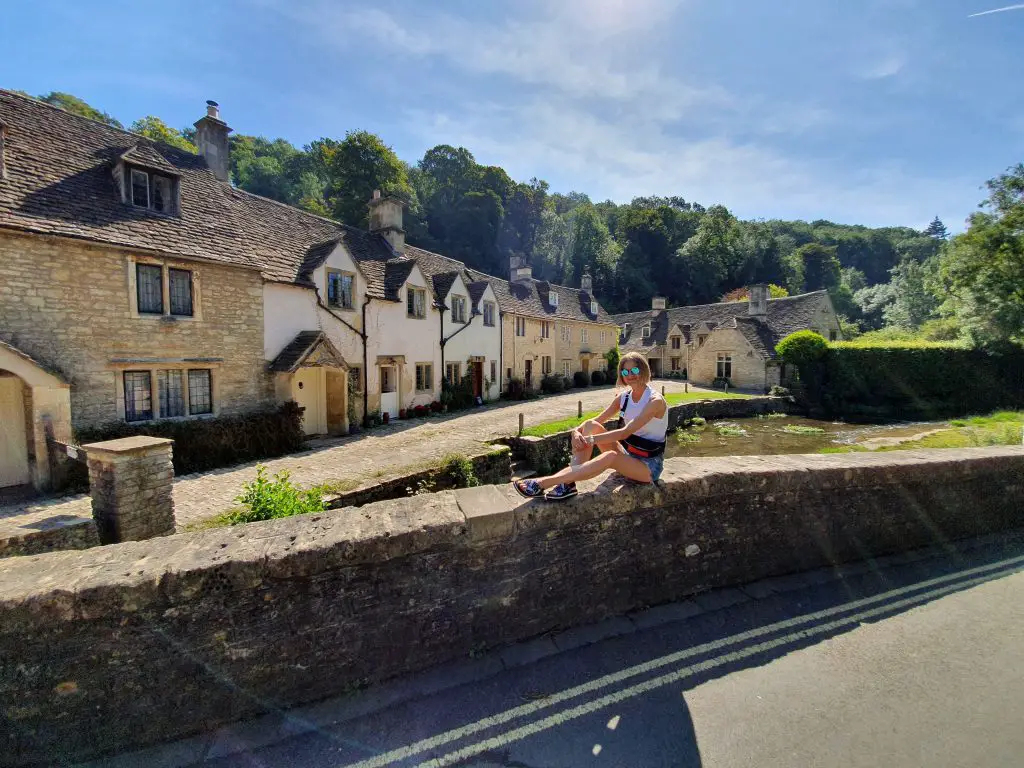
Castle Combe tourist information
Castle Combe is a charming village situated in the southern part of the Cotswolds, in the county of Wiltshire, South West England. The village is often referred to as the “prettiest village in England” due to its picturesque beauty and rural tranquility. Here’s some tourist information about Castle Combe:
- Things to see and do: Visitors to Castle Combe can take a leisurely stroll around the village, exploring the historic architecture, such as the Market Cross, St. Andrew’s Church, and the old wool storehouses. The village is also home to a couple of pubs, a luxury hotel with a golf course, and several small shops. Castle Combe Circuit, a motor racing circuit, is located just outside the village and offers various driving experiences and track days.
- Filming location: Castle Combe has been used as a location for numerous films and TV shows, including Stardust, War Horse, and Downton Abbey. Visitors can take a self-guided tour of the village, visiting the locations featured in these productions.
- Events: Castle Combe hosts several events throughout the year, including the Castle Combe Steam Rally in June and the Castle Combe Autumn Classic in October, which is a vintage car racing event.
- Nearby attractions: The city of Bath, with its Roman Baths, Georgian architecture, and numerous museums and galleries, is located just a short drive from Castle Combe. The Cotswolds, with its charming villages, rolling hills, and historic landmarks, is also within easy reach.
- Getting there: Castle Combe is located approximately 12 miles northwest of the town of Chippenham and 5 miles northeast of the town of Bath. The nearest train station is Chippenham, and the village can be accessed by bus or taxi. Visitors can also drive to the village, with car parking available in a public car park on the outskirts of the village.
What was filmed in Castle Combe?
What is Castle Combe famous for? Castle Combe is such a picture-perfect village location that it has been used as a backdrop in a large number of films. The village is a popular local because there are no TV aerials or telegraph poles, so it makes a perfect set, with no need for alterations.
One of the most popular recent films to have scenes here was the 2007 fantasy film Stardust. You can also spot the village in the 2011 film Warhorse and 2010 The Wolfman. The 1967 version of Dr Dolittle was filmed in large part in Castle Combe. They even dammed the river to make a small harbour for the film.
The village also makes an appearance in several TV programmes. You’ll see it in Agatha Cristie’s Poirot and the 1980’s version of Robin of Sherwood.
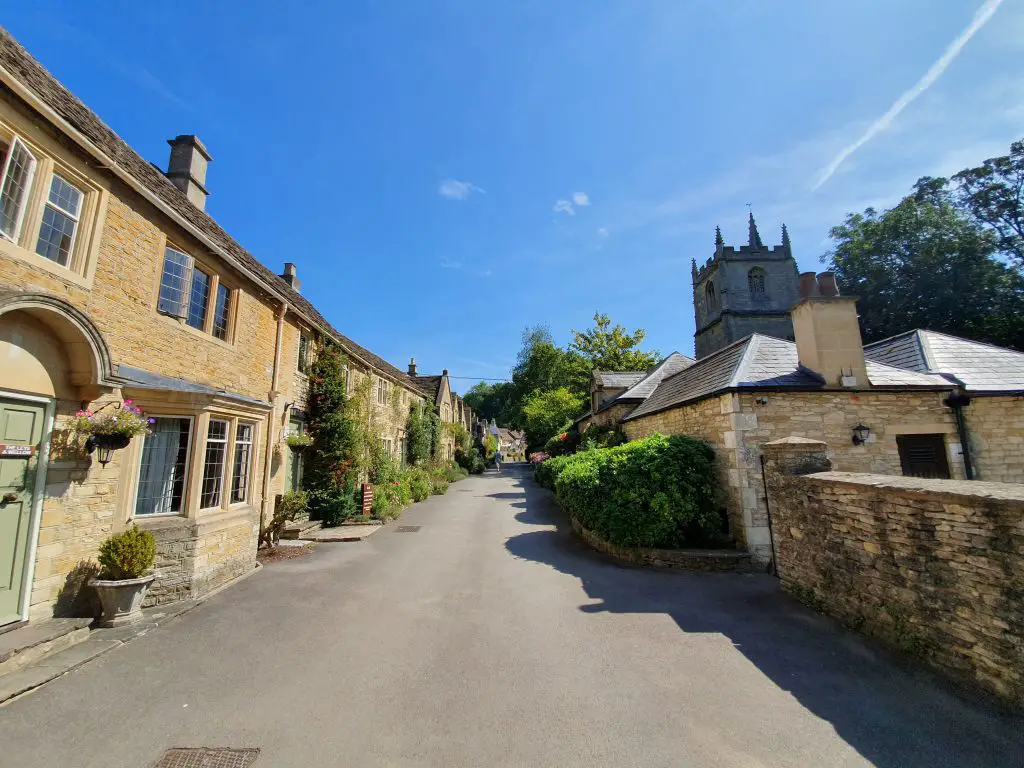
Why is Castle Combe famous?
Castle Combe is a village in Wiltshire, England, that is famous for its picturesque beauty and well-preserved medieval architecture. It has been used as a filming location for many movies and television shows, including Steven Spielberg’s “War Horse” and the 1967 version of “Doctor Dolittle”.
The village is often called “the prettiest village in England” and it’s a popular tourist destination for visitors interested in history, architecture, and the English countryside. Additionally, the Castle Combe Circuit, which is a motorsport race track located just outside the village, also makes it famous among motorsport enthusiasts.
Does Castle Combe get busy?
Castle Combe is a small village and it can get busy during peak tourist seasons such as summer, and during special events such as the Castle Combe Circuit race days. The village can also attract crowds of visitors on weekends and public holidays.
However, the village is relatively small, so even when it is busy, it is still possible to appreciate its picturesque beauty without large crowds. It’s also possible to avoid the busiest times by visiting during off-peak season or weekdays.
Pubs in Castle Combe
There are two pubs in Castle Combe that are popular with visitors:
- The Castle Inn: This traditional English pub is located in the heart of the village and offers a selection of local ales and ciders, as well as a menu of classic pub fare. The pub also has a large outdoor seating area with views of the village.
- The White Hart: This historic pub dates back to the 14th century and features a cozy interior with exposed beams and a log fire. The pub serves a variety of local beers, wines, and spirits, as well as a menu of seasonal dishes made with locally sourced ingredients. The pub also has a large outdoor seating area and a garden.
Both pubs are popular with locals and visitors alike, and offer a warm and welcoming atmosphere. It’s worth noting that the pubs can get quite busy, especially on weekends and during the peak summer season, so it’s a good idea to book a table in advance if you’re planning to visit.
Can you walk from Ford to Castle Combe?
Yes, it is possible to walk from Ford to Castle Combe, but it would be quite a long walk and would likely take several hours. Ford is a village located about 3 miles (5km) northwest of Castle Combe, depending on the route you take.
The terrain is rural and hilly, and the walk would involve some uphill sections, so it’s recommended to be prepared for a moderate hike. There are also public transportation options such as bus, taxi or car rental, which would be faster and more comfortable way to reach Castle Combe from Ford.
Do people live in Castle Combe village?
Yes, people do live in the village of Castle Combe. The village is a small, picturesque community in Wiltshire, England, which is well-known for its well-preserved medieval architecture and stunning countryside. The village is home to a diverse population of people from all walks of life, including retirees, families, and professionals.
Castle Combe is also a popular tourist destination and many people choose to visit the village to appreciate its beauty, history and the local culture. While the village is small, it offers a range of amenities, including shops, pubs, and restaurants, which cater to the needs of both residents and visitors.
Castle Combe shops
Castle Combe is a small village, but it does have a few shops where visitors can purchase souvenirs, gifts, and other items. Here are a few of the shops you may find in Castle Combe:
- The Castle Combe Village Store: This small village store sells a range of groceries, snacks, and drinks, as well as local souvenirs and gifts.
- The Old Rectory Gift Shop: Located in the grounds of The Old Rectory Bed & Breakfast, this charming gift shop offers a range of gifts, homeware, and souvenirs, including local arts and crafts, pottery, and jewelry.
- The Malthouse Antiques: This small antique shop is located in a historic building and offers a selection of antiques and vintage items, including furniture, ceramics, and collectibles.
- Castle Fine Art: This small art gallery is located in the village and showcases the work of local artists, including paintings, prints, and sculptures.
- The Gossiping Goddess: This boutique gift shop offers a selection of unique and unusual gifts, including handmade jewelry, candles, and accessories.
Please note that the opening hours and availability of these shops may vary, so it’s a good idea to check with the individual shop or visit their website for up-to-date information.
Who lived in Castle Combe?
Castle Combe is a village in Wiltshire, England, that has a long history dating back to the medieval period. The village is named after the medieval Castle Combe Castle, which was built in the 12th century by the Lord of the Manor, but the castle was abandoned and fell into ruin by the 14th century.
Throughout its history, Castle Combe was home to various groups of people, including lords of the manor, tenants, and commoners. The village was primarily an agricultural community, with many of its residents working as farmers and laborers. There were also tradespeople, such as blacksmiths, carpenters, and weavers, who lived in the village.
Today, Castle Combe is a popular tourist destination and residential area, and is home to a diverse population of people from all walks of life.
Where was War Horse filmed Castle Combe?
The 2011 film War Horse, directed by Steven Spielberg, was filmed in several locations in England, including Castle Combe. Castle Combe’s picturesque village and countryside served as the backdrop for several scenes in the film, including the idyllic Devon village where the main character, Albert, grows up. Some of the specific locations used in the film include the village green and the 14th-century market cross.
Additionally, the Castle Combe Circuit, which is a motorsport race track located just outside the village, was also used as a filming location in the movie.
What river runs through Castle Combe?
The River ByBrook runs through Castle Combe. The Bybrook is a small river that flows for about 20 miles (32km) in the county of Wiltshire, England, it starts in the Cotswold Hills and flows into the River Avon.
The River Bybrook is notable for being one of the most unspoiled rivers in the county, with a diverse range of wildlife, including fish, otters, and kingfishers. The river also provides a scenic backdrop for visitors to Castle Combe, and there are several footpaths and walks along its banks that offer lovely views of the village and its surroundings.
Is Castle Combe Circuit a fast track?
Castle Combe Circuit is a motorsport race track that is located just outside the village of Castle Combe, England. The track is considered a fast circuit, with a length of 1.85 miles (2.98 km) and 13 turns.
The circuit is known for its fast corners and long straights, providing a challenging and exciting experience for drivers and riders. The track is used for car and bike racing, track days, testing, and driver training. The circuit is also a popular destination for motorsports enthusiasts and fans, who come to watch the races and enjoy the high-speed action.
Where to go around Castle Combe?
Castle Combe is located only a short drive from the historic cities, of Bath and Chippenham in the Cotswolds. You can easily pass several days exploring both cities. Other places worth a visit in the local area are the Hope Nature Centre in Trow Bridge and Lacock Abbey.
Of course, being located in the Cotswolds, the whole village is surrounded by scenic countryside. There are numerous walking routes to be found in the local area, or a short drive away. There is also plenty of quaint cafes and English pubs to while away the days.
There are many great things to do near Castle Combe. If you are willing to travel a bit further away from Castle Combe village, you should visit the below locations.
All of them are perfect ideas for a day out of London, so as the Castle Combe is 🙂
Places to visit near Castle Combe:
- Bradford-on-Avon: 14 miles away from Castle Combe
- Bristol: 21 miles away from Castle Combe
- Stroud: 25 miles away from Castle Combe
- Bibury: 31 miles away from Castle Combe
- Stonehenge: 33 miles away from Castle Combe
- Broadway Tower: 34 miles away from Castle Combe
- Cheddar Gorge: 35 miles away from Castle Combe
- Faringdon: 39 miles away from Castle Combe
- Bourton-on-the-Water: 40 miles away from Castle Combe
- Lower Slaughter: 40 miles away from Castle Combe
- Glastonbury: 40 miles away from Castle Combe
- Burford: 48 miles away from Castle Combe
- Wantage: 50 miles away from Castle Combe
- Witney: 53 miles away from Castle Combe
- Isle of Wight: 85 miles away from Castle Combe
Is it worth visiting Castle Combe village?
The tiny village of Castle Combe has been called the prettiest village in England for years. I guess many of you have only seen it on screen in a few movies. Castle Combe enjoys a reputation for being one of the most photographed places in England as it’s one of the most famous British landmarks, so it must be one of the best places to visit in the UK! Do you agree?
This fairy-tale-like village is totally worth visiting for a day trip from London or even as a weekend trip if you place to explore the surrounding area a bit more. It really is one of the best places to visit near London.
Book a room at Manor House Hotel and enjoy time in a quintessential Cotswolds village, located in an Area of Outstanding Natural Beauty in Wiltshire. You will LOVE it! ?
Castle Combe village FAQ:
Most people visit Castle Combe as part of weekend trip away in the UK but it is also possible to visit the village on a day trip from London by car.
Manor House Hotel is a grand hotel and the most popular in Castle Combe.
Cheddar Gorge is a must-see place near the village. it is one one the most beautiful places in southern England.
Love England and the rest of the UK?
Read our other articles related to this stunning country:
- Weekends away UK
- United Kingdom landmarks
- Best places to visit in South England
- Countryside drive near me
- Day trip from London
- Cheap things to do in London
- Places to go in England
- Forest around London
- Picturesque villages near me
- Best places to live around London
- Scenic walks near me
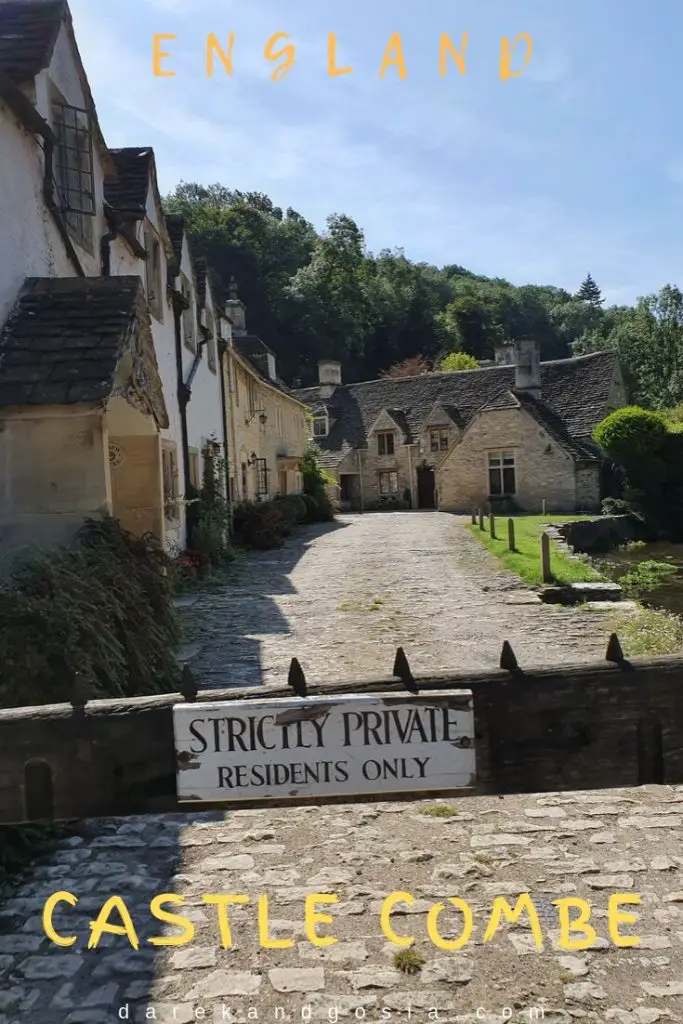
Articles you may like:
